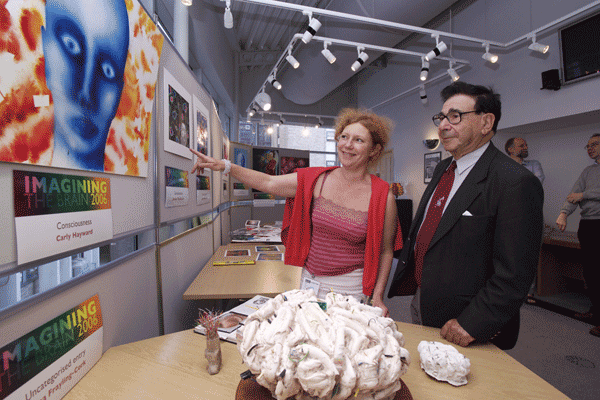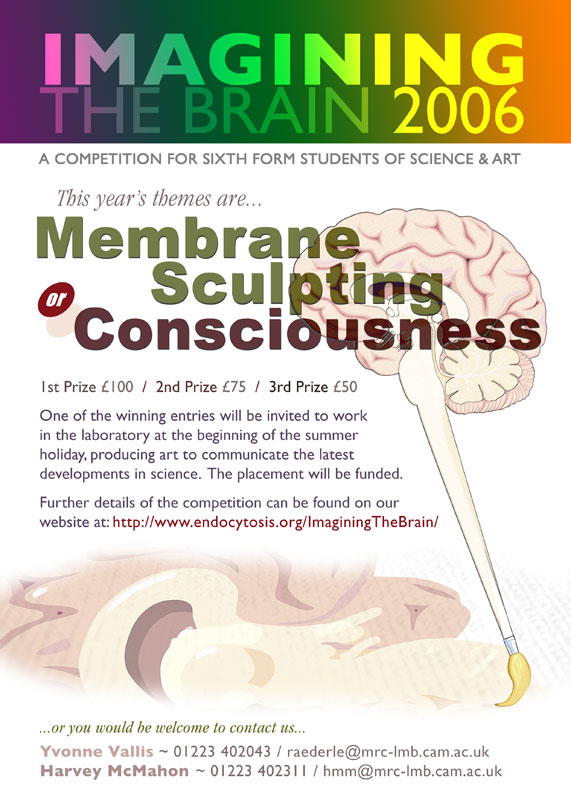Who can applyThis competition is open to all 6th form students of both art and science in the Cambridge area. We are looking for people who are inspired by science, can see science from a different point of view, challenge existing perceptions and communicate complex scientific ideas visually. What does the competition involve?
|
|
Membrane sculpting:Cellular membranes are semi-fluid lipid bilayers that define the compartments of a cell. Cells need to sculpt their membranes in order to change their shape and move things around inside the cell in a directed fashion. Cells may need to alter their shape on a large scale, for instance a neuron growing an axon that can be many centimetres long. Cells can also undergo dynamic changes in shape, many of which are very small scale, for example the changes in shape associated with uptake of nutrients and recycling of synaptic vesicles. A cell can use a range of molecular tools (proteins) to sculpt its membranes. Some proteins actively change the shape of membranes, others are structural and stabilise the shape change. The process may be transitory or last for the lifetime of the cell. The proteins involved in membrane sculpting are built up of domains that have distinct features that determine how they interact with lipids and other proteins. For instance, a pleckstrin homology, or PH domain, confers lipid specificity, determining whether the protein binds to the inside of the plasma membrane, or to an internal cellular compartment. BAR domains are banana shaped protein structures. Some can sense membrane curvature by the accuracy of membrane fit into the curve and others can change curvature by forcing their concave shape on the membrane. Another way of creating membrane curvature is to insert part of a protein into the first half of the lipid bilayer. This then acts as a wedge to force the lipid molecules apart thus producing curvature. At the same time, other domains on the protein may recruit additional proteins to the site of curvature. |
|
Consciousness:We are aware of our own existence, sensations and thoughts. We are capable of thought, will and perception. Are these processes unique to humans? Is it necessary for us to be conscious to perform everyday acts? To what extent is consciousness the same as intelligence? “I think, therefore I am”. Is consciousness a side effect of the ability to perform complex thoughts? Where does consciousness reside in the brain? What neurochemical processes underlie consciousness? Can the brain understand itself? |

